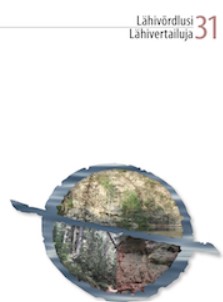Miten kuvailla vihaa? Viron ja suomen idiomien vertailu kognitiivisen kielitieteen näkökulmasta
How to describe anger? A comparison of Estonian and Finnish idioms from the perspective of cognitive linguistics
Author(s): Ene Vainik, Pirkko Muikku-Werner, Geda PaulsenSubject(s): Comparative Linguistics, Cognitive linguistics, Finno-Ugrian studies
Published by: Eesti Rakenduslingvistika Ühing (ERÜ)
Keywords: anger; idioms; cognitive metaphor theory; metonymy; metaphor; scenario;
Summary/Abstract: This study focuses on a comparison of two sister languages, Estonian and Finnish. The purpose is to compare the idiomatic expressions which describe the emotion of anger in order to find out the similarities and differences in its conceptualisation and lexicalisation. The findings are interpreted by using the framework of cognitive metaphor theory. The idioms of both languages fit onto the five-stage scenario like folk model of anger (the offense and beginning of anger; the (physiological) effects of anger on Self; the attempt to control the emotion; losing the control; retribution i.e. aggressive behaviour). The cognitive model represents these aspects of the anger event which are conceptualised by using figurative expressions. Both languages provide a rich array of expressions motivated by cognitive metonymies. The emotion is described by referring to its bodily symptoms, i.e. the expected changes in the position or function of one’s body parts (both internal and external). The descriptions vary from realistic (e.g., rusikat näitama (Est) ‘to demonstrate aggressivity’, lit. ‘to show one’s fi st’) to unrealistic and even absurd ones (e.g., vetää herneet nenään (Fin) ‘to become angry’, lit. ‘to aspirate peas into one’s nose’). The differences lie in particular elements of the (human) body or physiological processes these languages focus on: Finnish idioms refer also to the (negative) activation of the brain and to a pattern of autoaggressive behaviour while the Estonian idioms pay more attention to the feeling of pressure in one’s chest and – on the other hand – also refers to the body parts of (domestic) animals. The latter expressions mix the metonymies with metaphoric mapping man is an animal and subject the (intensity of) emotional reaction to ridicule. In regard to the cognitive metaphors, some widespread ones could be detected in both of the languages, namely anger is hot fluid in a container, the intensity of anger is heat and anger is fire. Estonian tends to exploit the metaphor anger is fluid in a container more widely, by specifying the nature of fluids (such as poison and beer/alcohol) and the nature of containers such as one’s heart and spirit. In Estonian also the metaphor anger is a natural force is used in order to conceptualise one’s inability to control the emotion. The reifying metaphor experiencer is a machine seems to be a Finnish peculiarity.
Journal: Lähivőrdlusi. Lähivertailuja
- Issue Year: 2021
- Issue No: 31
- Page Range: 252-285
- Page Count: 34
- Language: Finnish

